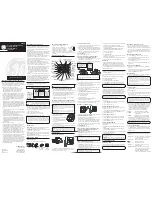
63
5. Maintenance
Self-Test
The Telephone System initiates a 'self-test' when the 220-240VAC mains supply is switched on. This
self-test power-on sequence includes:
RAM Test
PSTN Dial Tone Detection
Expansion card detection
Electronic Switching
PSTN Exchange Line Ports
PSTN Exchange Line Signalling Method (DTMF/Decadic)
ISDN line status
DTMF Resources
The power-on self-test procedure takes about 10 seconds to complete.
After the power-on self-test the green LED on the case will flash slowly, after about 10 seconds. If
this does not flash then there is either a power supply problem or a faulty processor or EPROM.
Check the fuse and check that the EPROM has been inserted correctly if it has been replaced.
Customer Database Protection
EEPROM (E²PROM) protects the Customer Database containing all the system programming in
the event of a mains power failure. Batteries are not used anywhere in the system. After
programming changes, the system should not be switched off for 6 minutes.
Generic Software Memory
The system's generic operating software is stored on an EPROM and is self-protected in the event of
a commercial power failure. Before replacing this ensure that the system is powered off
Expansion / Optional Plug-In PCB
Some of the plug-in boards have lines with ringing voltage of up to 70V AC. The mains power must
be removed from the unit before removing and replacing these boards.
These are specific dedicated function boards and can be easily identified for maintenance purposes.
It is recommended that you do not remove or replace these PCB’s from their connectors with power
connected to the system, as the system may be reset or cause a lock up.
Section
5
Warning!














































